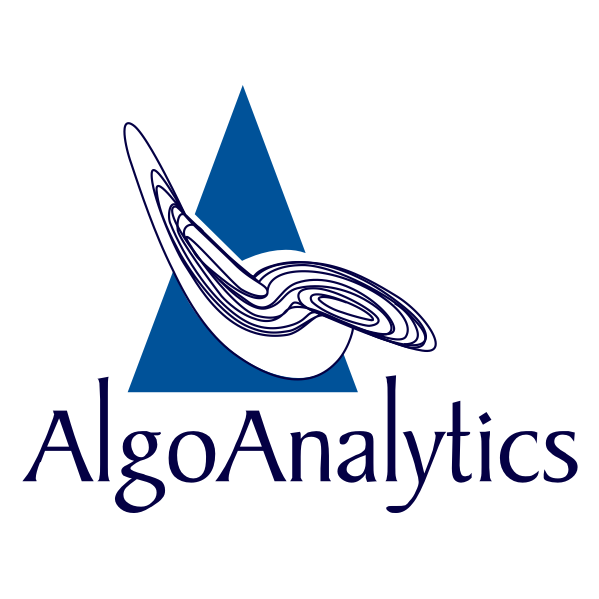By Vikram Joshi
Any profitable business strives to increase productivity in order to maximize output. Business optimization plays an important role as it helps businesses improve their efficiency, increase their productivity and enhance their performance. Optimization is vital because it helps to find the best solution to a problem among a large number of possible solutions. In many real-world situations, there may be numerous factors to consider, and finding the best solution is not always straightforward. Mathematics has always been used to optimize business operations and one such problem is the Maximum Cut problem.
The Maximum Cut problem (Max-Cut) is a mathematical problem that involves dividing a group of objects into two separate groups in such a way that the number of “cuts” between the two groups is maximized. A “cut” in this context means an edge or connection between objects that are in different groups. In the Maximum Cut problem, the objects are represented as vertices in a graph, and the edges represent connections between them. The goal is to divide the vertices into two groups so that the total weight of the edges that cross the two groups is maximized.
For example, let’s consider a group of 4 cities (represented as vertices in a graph) and their road connections (represented as edges in a graph). The graph can be represented as follows:
A — B
| |
| |
C — D
To solve the Maximum Cut Problem, our aim is to divide the cities into two groups in such a way that we cut as many road connections as possible while keeping the number of road connections between the groups maximum.
One possible partition could be:
- Group 1: {A, D}
- Group 2: {B, C}
This partition cuts the following edges between groups 1 and 2: Edge (A, B) and Edge (D, C).
Therefore, the maximum cut for this graph is 2. This means that by dividing the cities into two groups as above, we have cut the maximum number of road connections while keeping the number of road connections between the groups maximum. The complexity of this problem increases as the number of cities increases.
Similarly, the Maximum Cut Problem has a number of other business applications which can potentially help in high optimization.
Potential Applications in the Manufacturing Domain
In the manufacturing sector, if the processes are represented as a graph and solved using the Maximum Cut Problem, companies can identify areas for improvement and make data-driven decisions to optimize their operations. This can be done the following way:
- Production Planning- The production processes can be represented as a graph, where the vertices represent the production steps, and the edges represent the flow of materials between the production steps. The Maximum Cut problem can then be used to partition the production processes into two groups, such that the flow of materials between the groups is minimized.
- Quality Control- The products can be represented as vertices in a graph, and the edges can be weighted based on the similarity between the products. The Maximum Cut problem can then be used to partition the products into two groups, such that the dissimilarity between the groups is maximized. This can help identify potential quality issues and improve the overall quality control process.
Potential Applications in Financial Services
- Fraud Detection- Banks and financial institutions can use the Max-Cut to detect fraudulent transactions in their network. By modeling transactions as a graph, the algorithm can partition the nodes into two sets, one containing the legitimate transactions and the other containing the suspicious transactions. This can help banks to identify patterns of fraudulent activity and take appropriate action.
- Portfolio Optimization- Portfolio optimization is a key task in asset management. By modeling the assets as nodes in a graph and the correlations between them as edges, Max-Cut can help financial advisors to construct optimal portfolios that balance risk and return.
- Credit Scoring- Credit scoring is an important task in the lending business. By modeling the borrower’s credit history as a graph, Max-Cut can help banks to identify high-risk borrowers and assign them higher interest rates or reject their loan applications altogether.
- Network Security- Financial institutions are often targeted by cybercriminals who attempt to breach their network security. By modeling the network as a graph, Max-Cut can help banks to identify vulnerable points in their network and take appropriate measures to enhance their security.
Potential Applications in Healthcare Domain
- Patient Segmentation- Max-Cut can be used to segment patients into two groups based on their medical conditions, demographic data, or other factors. This can help healthcare providers to design personalized treatment plans that are more likely to be effective.
- Disease Diagnosis and Medical Image Analysis- By modeling the symptoms and medical history of patients as a graph Max-Cut can be used to diagnose diseases. This can be done by partitioning the nodes into two sets, one containing the patients with the disease and the other containing the patients without the disease, the algorithm can help healthcare providers to identify the disease more accurately and recommend appropriate treatment. Similarly, the nodes can be partitioned into two sets, one containing the healthy tissue and the other containing the diseased tissue and the algorithm can help healthcare providers to identify the diseased tissue more accurately and recommend appropriate treatment.
- Drug Discovery- Max-Cut can be used to optimize drug discovery by modeling the chemical structure of drugs as a graph. By partitioning the nodes into two sets, one containing the drugs that are effective and the other containing the drugs that are not effective, the algorithm can help researchers to identify the optimal drug candidates and minimize the cost and time required for drug discovery.
Potential Applications in Retail and E-commerce domain
- Product Recommendations- The Max-Cut problem can be used to group similar products based on their attributes, such as price, category, and brand. This helps e-commerce companies to make personalized recommendations to their customers, which can increase customer engagement and sales.
- Customer Segmentation- By dividing customers into two groups, e-commerce companies can target their marketing efforts more effectively and personalize their recommendations based on their purchasing behavior, preferences, and demographic information.
- Inventory Management- Inventory management can be optimized by dividing the inventory into two groups, high-demand and low-demand products. E-commerce companies can then prioritize their inventory management efforts accordingly, reducing the risk of stockouts and overstocking.
The Max-Cut problem has other applications in fields like Computer Vision and even Natural Language Processing (NLP). In NLP, Topic Modelling, Sentiment Analysis and Text Summarization can use the Max-Cut for better efficiency whereas in Computer Vision it can be used for Object recognition, Stereo Vision and Image Segmentation as well.
Why use Quantum Computing for Max-Cut?
The Max-Cut problem is an NP-hard problem, meaning that no classical algorithm can solve it efficiently for large graphs. Quantum computing offers a potential solution to the maximum cut problem by leveraging the properties of quantum mechanics. Quantum algorithms like the Quantum Approximate Optimization Algorithm (QAOA), can be used to search for the optimal partition more efficiently than classical algorithms.
QAOA is a quantum algorithm designed specifically for optimization problems, including the maximum cut problem. QAOA uses a quantum circuit to generate a superposition of candidate solutions, and then uses classical optimization techniques to find the solution that maximizes the objective function. QAOA has been shown to provide competitive results for the maximum cut problem compared to classical optimization algorithms.
In summary, quantum computing offers a potential solution to the maximum cut problem by providing quantum algorithms that can search for the optimal partition more efficiently than classical algorithms.
Conclusion
The maximum cut problem has a wide range of business applications in various fields, including finance, logistics, and network optimization. By identifying the optimal partition of a graph, businesses can make better decisions to optimize their operations, minimize costs, and maximize profits. As Quantum Computing continues to evolve and become more accessible, it has the potential to provide even more efficient solutions to the maximum cut problem, unlocking new opportunities for businesses to optimize their operations and stay ahead of the competition.
References:
https://en.wikipedia.org/wiki/Maximum_cut
https://link.springer.com/referenceworkentry/10.1007/978-0-387-74759-0_358
https://www.mdpi.com/2227-7390/8/2/298
http://homepage.cs.uiowa.edu/~tinelli/classes/AR-group/readingsS04/MaxCutQE_Draft.pdf
https://www.cnet.com/tech/computing/quantum-computer-makers-like-their-odds-for-big-progress-soon/
https://journals.aps.org/pra/abstract/10.1103/PhysRevA.97.022304
https://bmcbioinformatics.biomedcentral.com/articles/10.1186/1471-2105-12-S9-S12
https://bmcbioinformatics.biomedcentral.com/articles/10.1186/1471-2105-16-S14-S4
https://core.ac.uk/download/pdf/82511429.pdf
http://srmanikandasriram.github.io/files/DSA/Term_Paper.pdf
https://www.mdpi.com/2227-7390/8/2/298
https://en.wikipedia.org/wiki/Quantum_optimization_algorithms

